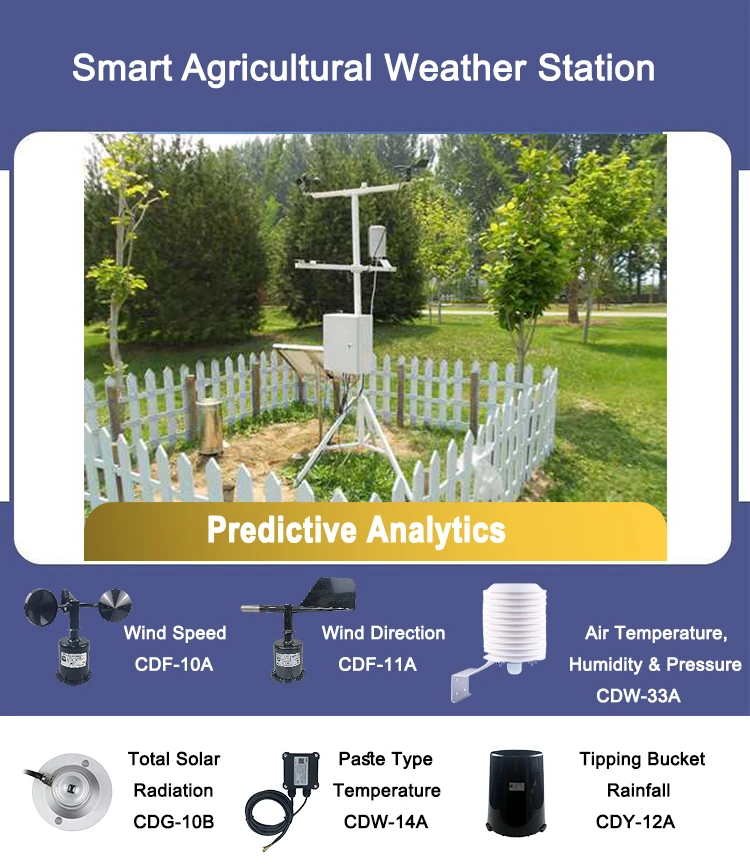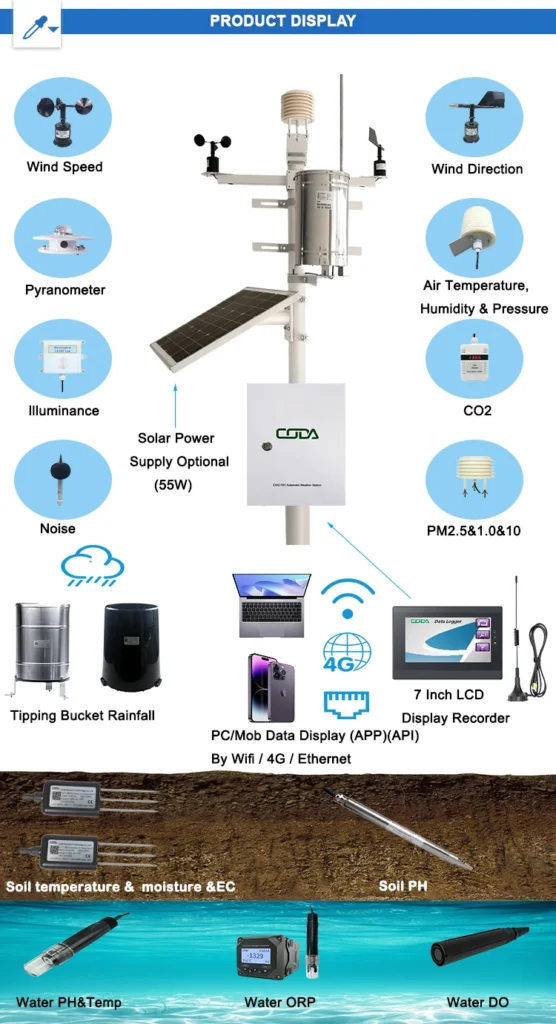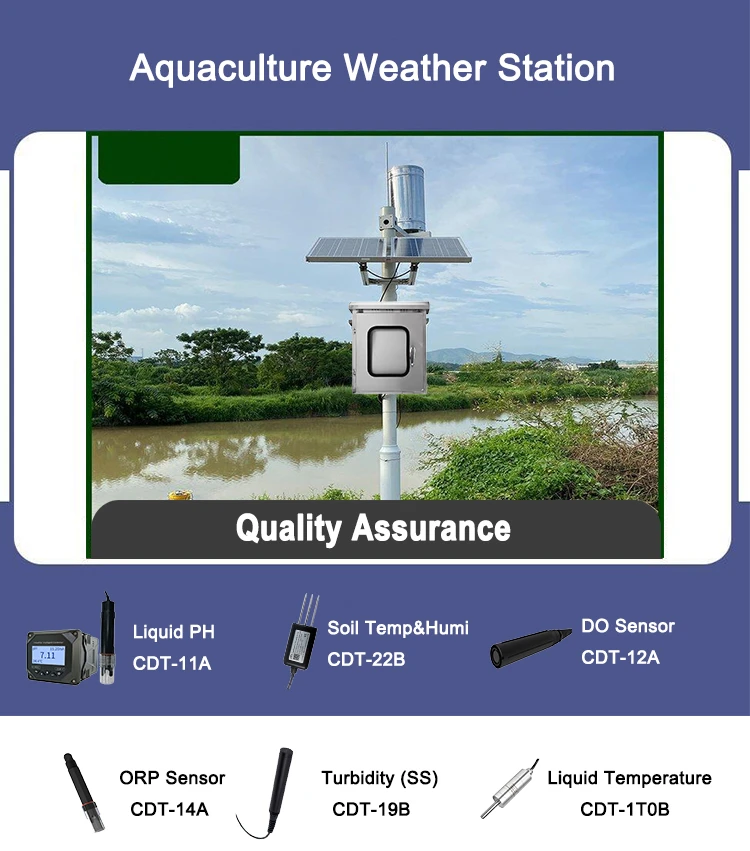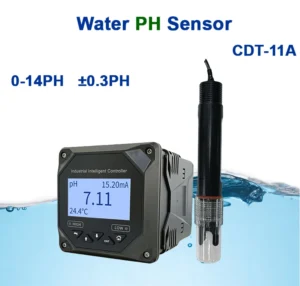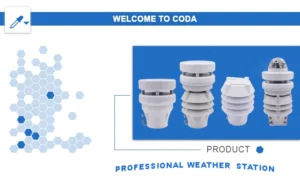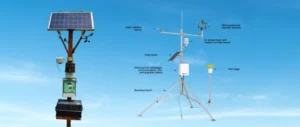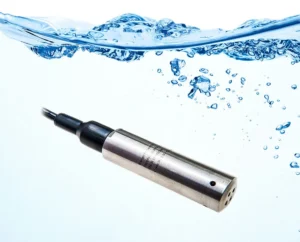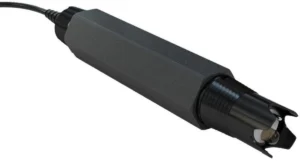How an Automatic Weather Station Works
In our connected world, it is important to get accurate and timely weather data for many areas. This includes farming, planning for emergencies, and studying climate. Automatic weather stations (AWS) are useful tools.
They watch the weather all the time. They do not need people to be there. Their reliable operation provides a steady flow of important data. This makes them essential in today’s weather monitoring systems.
Key Components and Their Roles
An automatic weather station has several key parts. Each part has a special job. This helps everything work well.
**Sensors**
Sensors are the main tools used to collect data in an AWS. They measure various weather factors to get a full picture of the weather. For instance:
– Temperature sensors record air temperature.
– Humidity sensors check the amount of moisture in the air.
– Barometers measure air pressure. They help us predict changes in the weather.
– Wind sensors check how fast the wind blows and which way it goes.
– Rain and snow sensors measure how much it rains or snows.
Each sensor plays a key role in collecting clear and accurate weather data.
**Data Collection Unit**
This part is the main processor of AWS. It gathers raw data from the sensors and processes it to ensure reliability and precision.
Usually, a data collection unit has a microcontroller or microcomputer. It runs special software to manage tasks. This means changing the sensors. It makes sure that readings stay the same and correct over time.
**Communication Module**
Once processed, the data needs to be transmitted to a central server or cloud platform. The communication module makes this transfer possible using Wi-Fi, cellular networks, or satellite systems. The choice of how to communicate depends on where the station is and what data it needs to send. This ensures a smooth flow of information, even in remote areas.
**Storage System**
AWS units have strong storage systems. These include microSD cards and built-in memory to keep data safe. These storage parts save information if there are problems with transmission or power outages. Many systems use encryption and backup methods to keep stored data safe and accurate.
**Power Supply**
It is important to have a steady power supply for smooth operation. This is especially true in remote areas. To solve this, AWS units often use solar panels for clean energy.
Batteries and grid connections are both options. The choice depends on where you are and how much energy you need.
How Data Is Collected
To give accurate and reliable results, AWS units use a clear data collection process:
**Scaling and Calibration**
Accuracy starts with regular scaling and calibration. These steps make sure that sensor readings match set reference standards or known values. This regular maintenance keeps the weather data reliable for a long time.
**Data Transmission**
After collection, data is transmitted to centralized systems for analysis. Technologies like Wi-Fi and mobile networks are often used. Satellite communication is saved for stations in remote areas. In most cases, real-time transmission gives users quick access to updates as they occur.
**Real-Time Monitoring**
AWS data can be accessed in real time through web portals, mobile apps, or interactive dashboards. These platforms provide users, such as emergency services, researchers, and farmers, easy access to up-to-date information. Cloud-based solutions make it easier to access information. They let users all over the world check real-time conditions easily.
Data Analysis and Interpretation
Data from automatic weather stations is more than just numbers. It tells us about the weather. And it tells us about the weather.
It helps us understand patterns. This information is important for many reasons. It tells us about the weather.
It is a valuable source of information. When we look at this data, we can find key insights.
Automated Analysis: Smart algorithms and software look at data from many sensors. This helps quickly find patterns and problems.
This process makes it easier for users to understand data. Using automation makes analyses more consistent and reliable. This lowers the chances of making mistakes.
Predictive Modeling: Machine learning and artificial intelligence (AI) greatly improve how we forecast the weather. These tools use past data to predict future weather trends.
This helps find risks and make plans for the future. Predictive models help farmers know the best times to plant and harvest their crops. They do this by looking at the weather that is expected.
Data Visualization: Tools like graphs, charts, and maps help us understand complex data more easily. Geographic Information Systems (GIS) and other tools help show information clearly and effectively.
Applications of Automatic Weather Stations
Automatic weather stations play a vital role across various sectors:
Agriculture:
Farmers rely on current weather data to make smart choices about planting, harvesting, and watering their crops. Data on temperature, humidity, and rainfall directly affects how we manage crops. For example, if a heatwave is coming, farmers can take steps to protect their crops.
Emergency Services:
Good weather data is important for getting ready for and responding to disasters. During hurricanes or floods, real-time information helps emergency services act fast. This teamwork can save lives and lower property damage.
Research Institutions:
These stations are essential for studying climate and analyzing weather patterns over a long time. Researchers use the data to study climate change.
They expect very bad weather events. They also look at how people affect the environment. These findings are important for creating plans to fight the effects of climate change.
Challenges and Limitations
Automatic weather stations have benefits, but they also face some challenges and limitations.
Technical Issues:
Common problems include connection issues, power outages, and sensor errors. A power outage can stop data collection. Also, broken sensors might give wrong readings. Good design and regular maintenance are important to solve these problems well.
Data Interpretation:
Complex datasets can be hard to understand. This is due to factors like urban heat islands and local environmental conditions.
These influences can lead to biases. This makes it harder to reach clear conclusions. To reduce these challenges, we need advanced analytics and strict quality control practices.
Environmental Factors:
External conditions can change how accurate sensors are. Pollution can disrupt sensor operations and lead to unreliable results. Urban and rural areas often have different weather patterns. This shows how important it is to think about local environments when looking at data.
Current Innovations and Future Outlook
The future for automatic weather stations looks good. This is due to ongoing advances in technology.
Emerging Technologies: New sensor technologies, machine learning, and AI are changing how we gather and study weather data. Better sensor accuracy and smart AI systems now give more reliable predictions. This makes things work better and builds trust.
Sustainability Measures: Current efforts aim to improve weather stations for the environment. Solar-powered stations help us use less regular energy. They also lower our carbon footprint. Using recycled materials in station designs helps lower the impact on the environment.
Global Collaboration: More countries are working together to watch the weather and study climate change. This makes forecasts more accurate and improves how we analyze data. Working together is key to solving global climate issues. It also helps us understand Earth’s complex weather systems better.
The Role of Continuous Monitoring and Research
Automatic weather stations are important for watching and understanding the natural world. These systems provide accurate and dependable data. They help industries from farming to emergency management.
There are challenges and limits, but teamwork around the world is making these stations better and more sustainable. We need to keep studying weather patterns and climate. This helps us learn more and make better choices to protect the Earth.
It is important to stay updated on new developments in weather station technology. This helps us better predict and respond to weather events. This progress helps create safer and stronger communities.
